I’m a bit behind on my blogging, but I intend to catch up in this post, as well as make up for the lack of pictures in my last two posts!
This week I was lucky enough to take a trip up to Willapa Bay in Long Beach, Washington, to finally do some serious fieldwork. I went with the Daniel Sund, the Masters student I’ve been working with, and Lee McCoy, our lab’s tech and general awesome go-to guy. We were out in the field for about 12 hours each day for a week, which was hard, but the work wasn’t too involved, and tons of fun!
While we were up there, we deployed our cameras using the mounts we made, leaving them out for four hours at a time in four different habitats: oyster, Zostera marina (the native seagrass), Zostera japonica (the invasive seagrass), and clam. My lab has done this before, but they used to leave them out for three days at a time, while our GoPros are limited by their four-hour battery life, despite the battery pac accessory we bought for them. The video is meant to record the fish and crabs that wander through the field of view. It had to be video, rather than time lapse, because often fish spend only a second or two in the frame, and you usually need to look at their behavior to determine the species. We are going to look at the number, species, size, and time that each organism appears in the video.
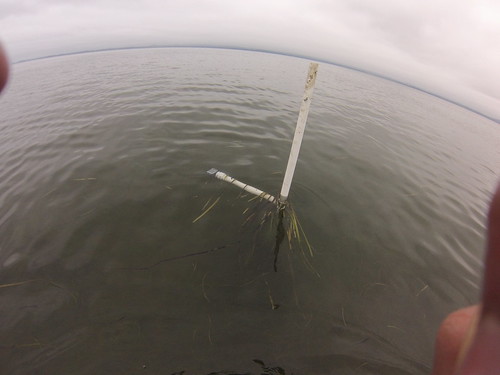
The mount with a GoPro on the end when we went to pick it up- there was often a lot of seagrass caught on them
We put them out around high tide, which meant we had to go by boat. Since our trips were four hours apart, there was a lot of waiting around in which we often tried various restaurants, as well as a lot of time on the boat, since some of them were pretty far apart. Because of this, even when I was walking on dry land I still felt like I was swaying on the waves. It was pretty disorienting sometimes, but went away in a couple days. Deploying the cameras was pretty difficult sometimes, because of the wind and the waves. It was harder than we expected to slide our camera mount over the poles we placed in the mud, slide a bolt through holes we drilled in the poles, and screw on a wingnut, all from a boat that is moving up and down and drifting away.
In addition to putting out cameras, we also put out traps to catch fish, which we could use to compare the number and species of what we found in the traps to what we found in the video. We did this at low tide when we put out the poles the mounts would go on. We also wanted to look at juvenile Dungeness crab predation, so we (bear with me here) superglued small fishing hooks tied with fishing line attached to their carapaces. We tied them to a stake out in the same four habitats as the cameras, and left them out for a day. The hooks are supposed to catch whatever fish may try to eat the small crabs, and the fishing line keeps the crabs in one place so we can find them again the next day.
I thought we were tying up the crabs and leaving them to their deaths, but most of them survived the whole day! The hooks also came off pretty easily at the end, and we let the crabs go. We never caught any fish, and always found the crabs burrowed in the sediment, well hidden.
We had to go collect the crabs ourselves, so we went and sampled bags of oyster shells (which I have mentioned in previous posts), to try to find some for our tethering experiment. Most of them were across the bay, in deep mud, so because of my toe still being sensitive, I often supervised from the boat while the other two did all the work. However, I did try my first raw oyster while we were out there. Lee shucked it for me with a screwdriver, and it was probably still alive when I ate it (gross!), but I am proud to say I kept it down. Now that I have tried it, I never have to again.
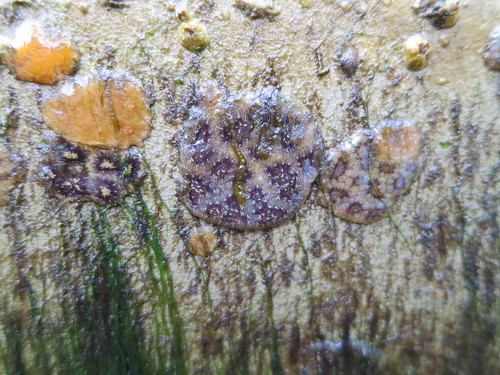
Some cool colonial tunicates we found on the boat when we pulled it out of the water at the end of the week
One day during our free time in the afternoon, we went up to the lighthouse at the top of the point on the Washington side of the mouth of the Columbia. It was a great view, and I never realized how large the mouth is! It was a beautiful view. Also, at the end of the trip we stopped in Astoria for lunch, and got to drive across the bridge and see a bit of the city.
Overall, it was a week of trying new things and spending a lot of time outside. In addition to the oyster, I also tried thimbleberries, pickleweed, raw cockle, elk, and probably several other things I can’t remember. I’m so glad I had the opportunity to go on the trip, and am looking forward to see what kind of fish show up in our video!

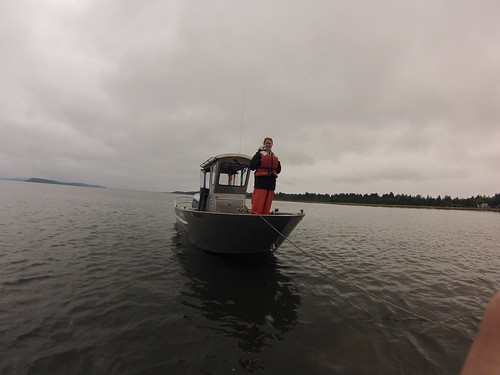
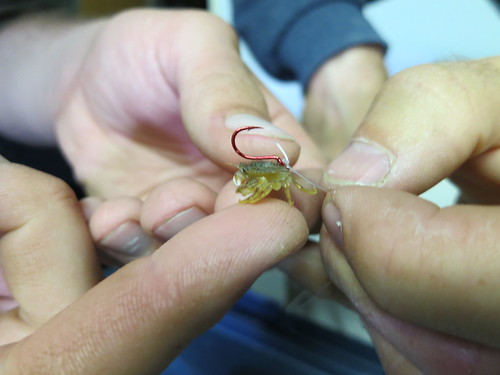
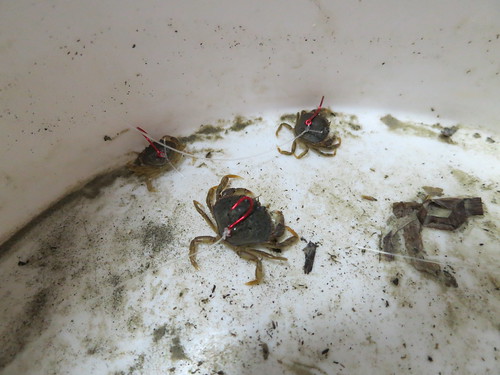

Wow. Sarah, sounds like you had a summer’s worth of field work all in one trip! And now you likely have a summer’s worth of data to analyze, all in one month! Looking forward to seeing some frames from the videos – fingers crossed that you see lots of critters! Any ideas on which sites will yield what types of organisms (AKA your hypotheses)?
Previous studies with juvenile Dungeness have shown us that they prefer habitats with more structural complexity, which would be the seagrasses and possibly oyster. A study I did this spring showed the biomass of the seagrass is a pretty good predictor of the amount of crabs (with the native Z. marina generally having a higher biomass). My classes in biology have taught me that fish have a similar attraction to complex habitats, and I would guess they also prefer the seagrass.